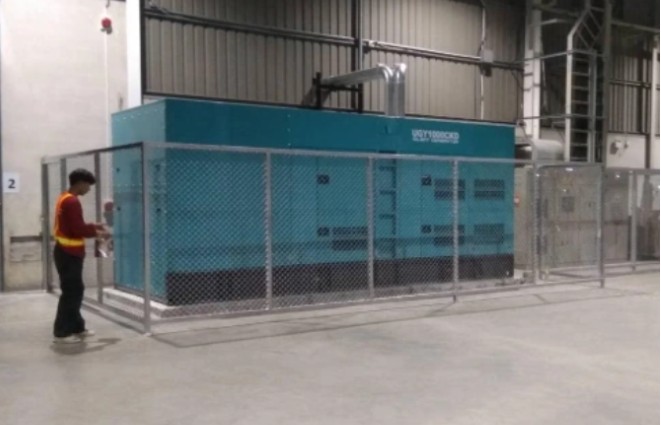Power Generation in a World Heading Towards Renewable Energy — Electromagnetic Generators

The electromagnetic generator เครื่องปั่นไฟ will have a crucial role in the future, as the world continues to transition towards renewable energy. Used in everything from wind turbines to hydroelectric plants, these generators are vital for turning natural energy sources into electricity that is usable. Due to the increasing expansion of renewable energy around the world, electromagnetic generators are likely to play a pivotal role in this transformation. This article is the one for you to read about how exactly electromagnetic generators work, its role in the renewable energy sector and why it will be important in a sustainable future power generator.
Let us first assume that we have at our disposal an electromagnetic generator.
An electromagnetic generator is a type of generator that produces electric energy using basic principles and working based on the principle of Electromagnetic Induction. Michael Faraday first discovered this principle in 1831 and it is the basis of virtually all modern power generation techniques. In other words, an electric current is induced in a conductor (like a body of coiled copper wire) as it moves through an external magnetic field. Such a process is at the core of all electromagnetic generators, with them being applicable across large scale power plants as well as smaller renewable energy systems.
Renewable Energy: Part C The ElectroMagnetic Generators
The world is transitioning from fossil fuels to cleaner sources of energy such as wind, water and solar in efforts to reduce carbon emissions. The generated electrical power from these natural sources by itself might not be sufficient so there exists a need for something in between to do that job and the electromagnetic generator fits into this. So how are these generators employed in different kinds of renewable systems lets see!
- Wind Power: Wind turbines transform the wind into an electromagnetic generator, capturing its rotational energy. When the blades spin, they turn a shaft linked to an electric generator: this movement creates a changing magnetic field which triggers electrical current. The electricity company puts this same power back on the network from where it was taken.
- Hydroelectric Power: The kinetic energy of flowing water turns turbines connected to electromagnetic generators, courtesy – hydro electric plants. The spinning of the turbine causes a rotor in the generator to turn, creating electricity that can be used by homes and businesses as well as industries.
- Using the proper principles results can also be drawn however with a tidal and wave power systems. Energy Excerpts: Water flowing in from a river spins an electromagnet to produce electricity at this New Jersey power plant powered by water.
- Hybrid Renewable Systems: Combining electromagnetic generators for optimal energy conversion and storage to hybrid systems (increased grid reliability) in combination with other renewable sources of power such as solar or wind.
Pros and Cons of Electromagnetic Generators in a Renewable Energy Future
Sustainable but also efficient and reliable solutions are required to ensure that the implementation of renewable energy is as successful. Advantages of electromagnetic generators
- High energy conversion efficiency: Electromagnetic generators are one of the most effective when it comes to converting mechanical force into electrical currents. It has been reported that they can convert this mechanical energy into electrical energy at up to 95%, helping reduce waste and improve output.
- Electromagnetic generators are highly flexible units with a scalable design for different uses, be it small off-grid systems or gigantic utility-scale power plants.
- Low Maintenance: Electric generators are low on maintenance compared with other energy conversion technologies. They almost never break down, with less moving parts and a more sturdy construction.
- Works with Green Energy: As a result, they are best suited for green energy sources that will allow renewable systems to directly output steady and solid power under variable conditions.
The Future of Electromagnetic Generators for Renewable Energy
With increasing worldwide energy needs, the necessity for sustainable and efficient power generation has never been more important. Key to this brave new world are electromagnetic generators. Materials are one area that technology can really advance the efficiency and performance of these generators with superconductors being a great example. Second, the incorporation of smart grid technology and energy storage systems to assist electromagnetic generators in dealing with variable renewable energies will lead to more stable power supply.
Electromagnetic generators are increasingly being invested in by governments and companies, especially those requiring high renewable potential locations. For instance the rise in wind and tidal power plant spends is also projected to drive considerable growth rates for electromagnetic gensets across high-wind or strong-tidal activity coastal areas. These resources are renewable and will become cleaner, more reliable sources of energy supply as technologies develop to provide developing parts an opportunity to climb out of poverty.
Yet, these electromagnetic generators could make even larger inroads into renewable energy if researchers can solve a few key problems. The main one is integrating them into grids designed for centralized, massive power plants. But adaptive technology might help here because the kind of power these machines produce could be just as volatile as the kinds produced by a wind or solar power plant.
Within that complexity lies the potential for innovative new ideas. High-efficiency energy storage power systems, based on batteries or flywheels, have been developed in tandem with advanced electromagnetic generators. However, for these to work as effectively as possible, a number of issues must be resolved—and they relate to the overarching goal of making everything work with renewable energy, including the electromagnetic generators themselves.
To push the world toward an era of sustainability requires some dynamism toward our planet being less dependent on fossil fuels—something that is impossible without the electromagnetic generator เครื่องปั่นไฟ. They convert clean, renewable power into the electricity used every day, whether they’re stationed in a wind farm, a hydropower plant, or a hybrid energy system. This technology is pretty well set for the present; advances will continue to lower costs and make more green technologies available and, in some cases, complement or replace old fossil fuel plants. One certainty, though, is that electromagnetic generators will be around for quite a while and are doubtlessly part of a cleaner energy future.



